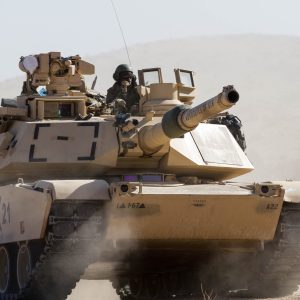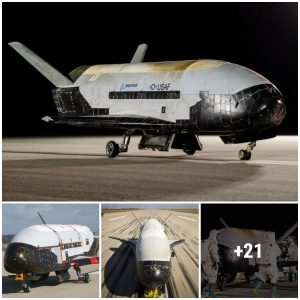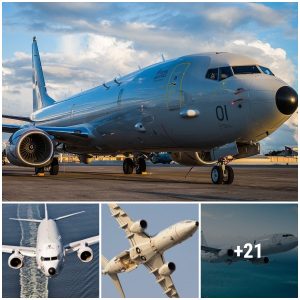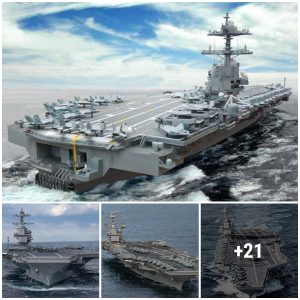“Fishbed,” the official NATO codename for the Mikoyan-Gurevich MiG-21 fighter plane, may not sound terribly intimidating. Indeed, it may bring to mind a seafood platter – I’m getting hungry even as I type these words. However, just as you can’t judge a book by its cover, you also can’t judge a warplane by its moniker. And as the American combat aviators who tangled with the MiG-21 in the skies over North Vietnam can attest, the Fishbed was one deadly, predatory flying fish. If anything, it was a piranha.

Funny Name, Serious Plane
As noted by military aviation expert Stephan Wilkinson, “The Soviets hated [the name], just as they hated Fagot, Faithless, Frogfoot and other Western names for their fighters. The MiG-21 had no official Russian identifier, but its popular handle was Balalaika, after the triangular folk instrument—an obvious reference to the MiG’s delta wing.” In designing their beloved Balalaika, the Soviets employed the same “Keep It Simple, Stupid” mentality that they followed with the production of the ubiquitous AK-47 battle rifle: simple, lightweight, reliable, and capable of being produced in mass numbers at relatively low cost. This was the polar opposite of the American approach of trying to create superfighters in small numbers.

However, simple and cheap didn’t translate to poor quality. The MiG-21 was Mach-2 capable and had a long production run, from 1959 to 1985. Imitation is the sincerest form of flattery, and the Fishbed was updated and modified by companies in India, Israel, and Romania. Today, 18 countries still operate this warbird, including Cuba and North Korea, not to mention NATO allies Croatia and Romania. To quote Wilkinson again, “The Fishbed is the most-produced supersonic fighter of all time, with 11,496 manufactured.”
A Long Track Record

The MiG-21 has seen its fair share of action. It was especially prominent during the Vietnam ധąɾ. Although the bigger U.S. F-4 Phantom was faster and had a more powerful engine, the Fishbed was nimble and maneuverable enough to take advantage of the extremely restrictive rules of engagements imposed by LBJ and Robert McNamara. Their size and speed allowed them to cut through bomber packages before U.S. fighters could visually identify and target them. They could evade early air-to-air missiles, and then vamoose back to home.

North Vietnamese MiG-21 pilots ended up shooting down 17 F-105 Thunderchief fighter-bombers, with no MiG losses to the Thuds. Against the Phantom, the Fishbed didn’t fare so well, ending up on the short end of the kill ratio. Eventually, Phantom pilots like the legendary Col. Robin Olds got the upper hand against their Communist enemies by learning to “fight in the vertical.” Rather than engaging in tight-turning dogfights, the F-4 drivers utilized their superior acceleration and thrust to climb vertically, and then to pull over the top and plunge full-tilt boogie upon their targets. Nonetheless, at least three Vietnamese People’s Air Force pilots became aces in the MiG-21, including Nguyen Van Coc, who ended the ωɑɾ with nine air-to-air kills.

Meanwhile, during Middle Eastern conflicts such as the Six-Day ധąɾ of 1967 and the Yom Kippur ധąɾ of 1973, Syrian and Egyptian Fishbed pilots were typically slaughtered by their better-trained Israeli opponents, but at least one Syrian pilot made ace status. Indian Air Force Fishbed pilots acquitted themselves well during the 1971 Indo-Pakistani ധąɾ , as did Iraqi Air Force MiG-21 pilots during the Iran-Iraq ധąɾ in the 1980s. However, during Operation Desert Storm, the Iraqi Fishbed pilots didn’t fare so well. They lost four of their number—two apiece to USAF F-15Cs and USN F/A-18s. They failed to get any kills against coalition aircraft.
Fishbed Flaws

In spite of its speed and nimbleness, the MiG-21 remains on the losing end of the overall air-to-air kill tally. Setting aside the superior training and technologies of the American and Israeli aircrews and airframes, at least part of this can be chalked up to inherent weakness in the Fishbed’s design. For starters there was the near-useless onboard radar, as only a small dish would fit into the jet’s airflow-slowing nose cone. It also had an extremely limited fuel capacity, typically only 45 minutes’ worth. To make matters worse, the Fishbed could not be dead-sticked to a landing if fuel ran out while near its airbase, since a power-on approach was required. Early versions of the warbird had a poorly designed fuel system to boot, and this ended up killing many inexperienced pilots.

In spite of these flaws and its age, the Balalaika battle bird keeps blazing through the skies. To conclude by quoting my 1945 colleague Robert Farley, “There may never be a hundred-year fighter (although the B-52 may quite possibly reach that number before final retirement). The MiG-21 will easily reach sixty, however, and probably seventy without breaking a sweat. It remains one of the iconic fighters of the supersonic age.”





